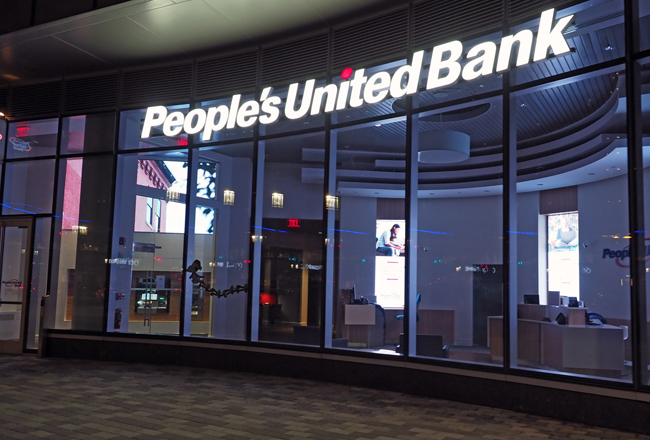In what has been an unstable economic environment to say the least, most of Connecticut”™s banks showed a year-over-year increase in assets in the second quarter ”“ something that arguably bodes well as the state continues to show encouraging signs of overcoming the initial wave of Covid-19.
According to the Federal Deposit Insurance Corp. (FDIC), for the 5,066 commercial banks and savings institutions that it insures across the U.S., aggregate net income totaled $18.8 billion in the second quarter 2020, down $43.7 billion ”“ a full 70% ”“ from a year ago.
“Lower levels of business activity and consumer spending ”“ combined with uncertainty about the path of the economy and the low interest-rate environment ”“ contributed to higher provisions for loan and lease losses, as well as a decrease in net interest margins,” FDIC Chair Jelena McWilliams said in a statement.

“Notwithstanding these disruptions, however, the banking industry maintained strong capital and liquidity levels at the end of the second quarter, which will protect against potential losses in the future.”
Q2 total equity capital numbers were up ”“ albeit slightly ”“ at nearly all Fairfield County-based banks. People”™s United in Bridgeport ”“ by far the county”™s largest, with 55 offices ”“ rose from about $6.95 million in Q2 2019 to over $7.8 million for the quarter ended June 30.
Union Savings Bank in Danbury realized $296,525 in total equity capital, compared with $271,095 for Q2 2019. Ridgefield”™s Fairfield County Bank was up from $212,059 to $224,394; Stamford”™s First County Bank rose from $150,746 to $159,479; Savings Bank of Danbury increased from $131,081 to $141,233; Newtown Savings Bank realized $112,132, up from the previous second quarter”™s $105,775; and Fieldpoint Private Bank & Trust in Greenwich rose from $107,530 to $111,885.
In addition, Westport”™s Connecticut Community Bank edged up from $46,960 to $50,952, while First Bank of Greenwich was up from $37,475 to $38,880.
Bankwell Bank, based in New Canaan, dropped from $196,090 last year to $188,555 this quarter; Patriot Bank, based in Stamford, declined from $96,295 to $92,749.
Nationwide, FDIC-insured community banks recorded a 3.2% increase in second quarter net income year-over-year; the 4,624 community banks reported annual net income growth of $202.5 million.
That the majority of banks were able to earn at least some capital increases was impressive, given the number of businesses affected and the total of individuals filing for unemployment remains worrying.
As of July ”“ the last month that figures have been made available ”“ both the state”™s and the nation”™s unemployment rate stood at 10.2%.
According to the state Department of Labor, Connecticut in July gained 26,500 net jobs (a 1.8% increase over the previous month). However, on a year-to-date basis, nonagricultural employment in the state fell by 146,300, or 8.7%.
Adding to the pressure on banks is the interest-rate cut in March to zero ”“ where it is likely to remain for at least a few years, according to reports ”“ as well as the ongoing uncertainty over when (or whether) the economy will get back on track and/or an effective Covid-19 vaccine is found.
Some economic glimmers of hope are beginning to emerge ”“ though, again, it seems that a lot is riding on the pandemic. New projections are forecasting the nation”™s GDP to grow by around 20% on an annualized basis in the third quarter, as business activity resumes.
The International Monetary Fund recently projected an 8% decline in U.S. GDP this year, while it predicts the worldwide global economic output to drop by 4.9%.
For 2021, however, it is forecasting a 4.5% increase in U.S. GDP and a 5.4% rise worldwide, easily outperforming 2019”™s respective figures. However, that this would leave 2021 GDP some 6.5% lower than in the pre-Covid-19 projections of January 2020.
The Bureau of Economic Analysis is scheduled to announce U.S.”™s third-quarter GDP figures on Oct. 29 ”“ five days before the presidential election.




















